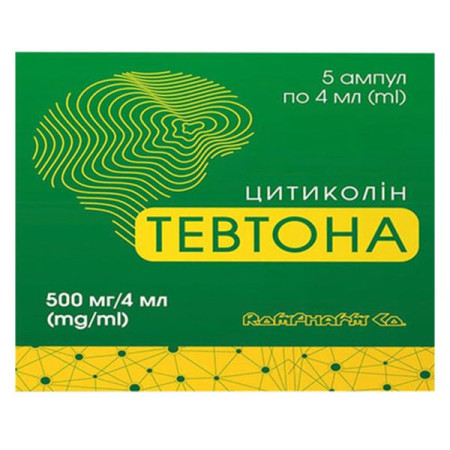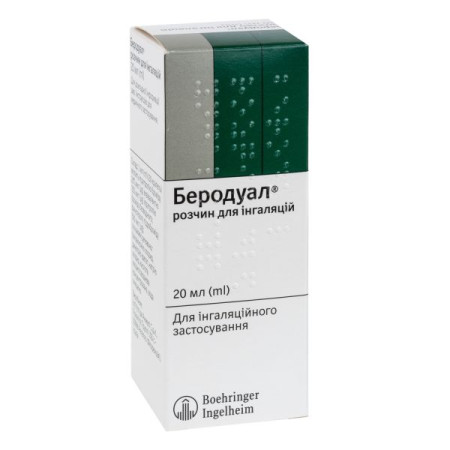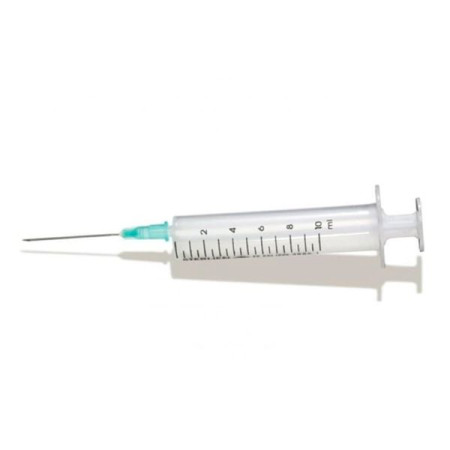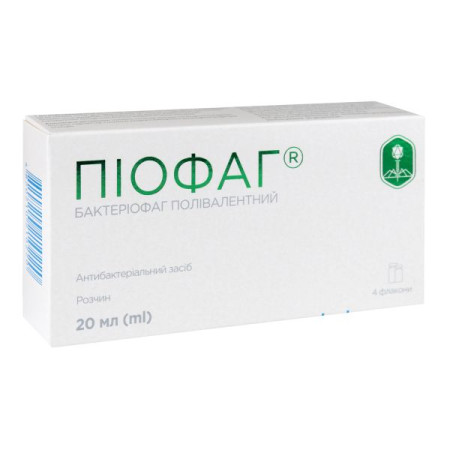Atraxan solution for injection 100mg/ml 5ml No. 5
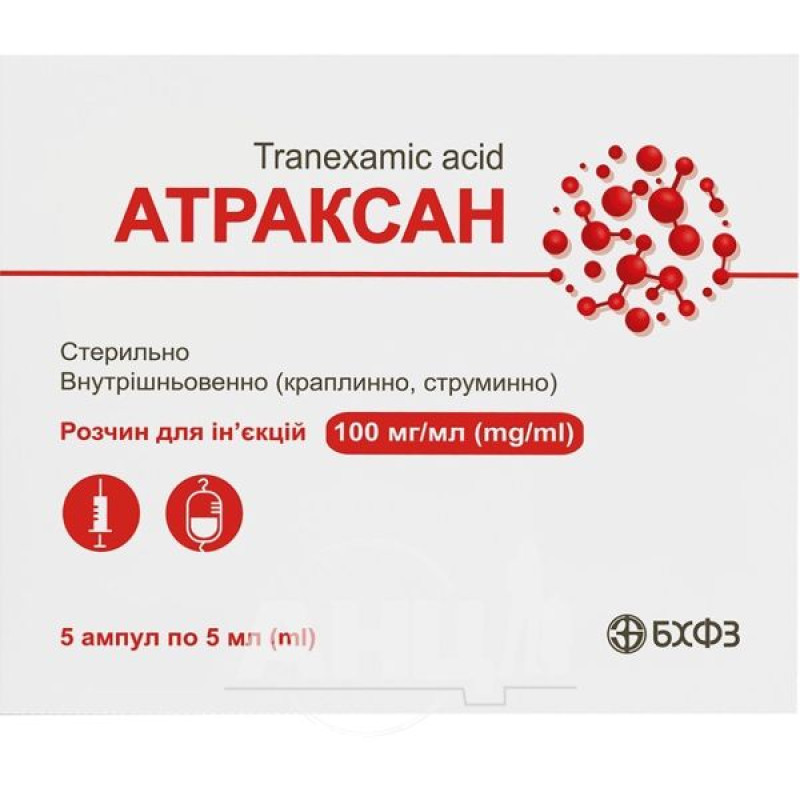
Atraxan is an antihemorrhagic agent, an antifibrinolytic aminooxylate. An inhibitor of fibrinolysis.
Indications for use - bleeding caused by increased general or local fibrinolysis, such as:
menorrhagia and metrorrhagia; gastrointestinal bleeding; hemorrhagic disorders of the urinary tract, arising in connection with surgery on the prostate gland or as a result of surgical intervention or procedures on the urinary tract;Warehouse
active ingredient: tranexamic acid; 1 ml of the drug contains tranexamic acid 100 mg; excipient: water for injection.Contraindication
Hypersensitivity to the active substance or to any of the components of the drug.
Acute venous or arterial thrombosis.
Fibrinolytic states after consumption coagulopathy, except for excessive activation of the fibrinolytic system in acute severe bleeding.
Method of application
In case of generalized fibrinolysis, tranexamic acid should be administered intravenously, slowly, at a dose of 1 g (2 ampoules of 5 ml) or 15 mg/kg of body weight every 6–8 hours, at an administration rate of 1 ml/min.
For local fibrinolysis, it is recommended to use the drug starting from a dose of 500 mg (1 ampoule of 5 ml) to 1 g (2 ampoules of 5 ml) intravenously, slowly (approximately 1 ml/min) 2-3 times a day.
Application features
The following indications and method of application should be strictly adhered to:
Intravenous injections should be given very slowly; tranexamic acid should not be administered intramuscularly.Convulsions: Convulsions have been reported in patients treated with tranexamic acid. In coronary artery bypass grafting (CABG) surgery, most of these cases were reported after high-dose intravenous tranexamic acid. When using the recommended low doses of tranexamic acid, the incidence of postoperative seizures was similar to that in patients not treated with the drug.
Pregnant women
Women of reproductive age should use effective contraception during treatment.
There are insufficient clinical data on the use of tranexamic acid in pregnant women.
During the first trimester of pregnancy, the use of tranexamic acid is not recommended.
Limited clinical data on the use of tranexamic acid in various clinical hemorrhagic conditions during the second and third trimesters have not revealed any harmful effects on the fetus.
Children
For children over 1 year of age, use as directed.
Drivers
There are no studies assessing the effect on the ability to drive or use machines.
Overdose
There have been no reports of overdose.
Symptoms of overdose may include dizziness, headache, hypotension, and convulsions. It has also been shown that convulsions generally tend to occur more frequently with increasing dose.
Side effects
Digestive tract - often: diarrhea, vomiting, nausea.
Skin and subcutaneous tissue disorders - uncommon: allergic dermatitis.
Blood and lymphatic systems - feeling unwell with hypotension, with or without loss of consciousness (usually after too rapid intravenous injection, as an exception - after oral administration). Arterial or venous thromboembolism at any site.
Nervous system - convulsions, particularly in case of improper use.
Organs of vision - visual impairment, including impaired color perception.
Immune system - hypersensitivity reactions, including anaphylactic reactions.
Storage conditions
Store in original packaging at a temperature not exceeding 25°C. Keep out of the reach of children.
There are no reviews for this product.
There are no reviews for this product, be the first to leave your review.
No questions about this product, be the first and ask your question.



